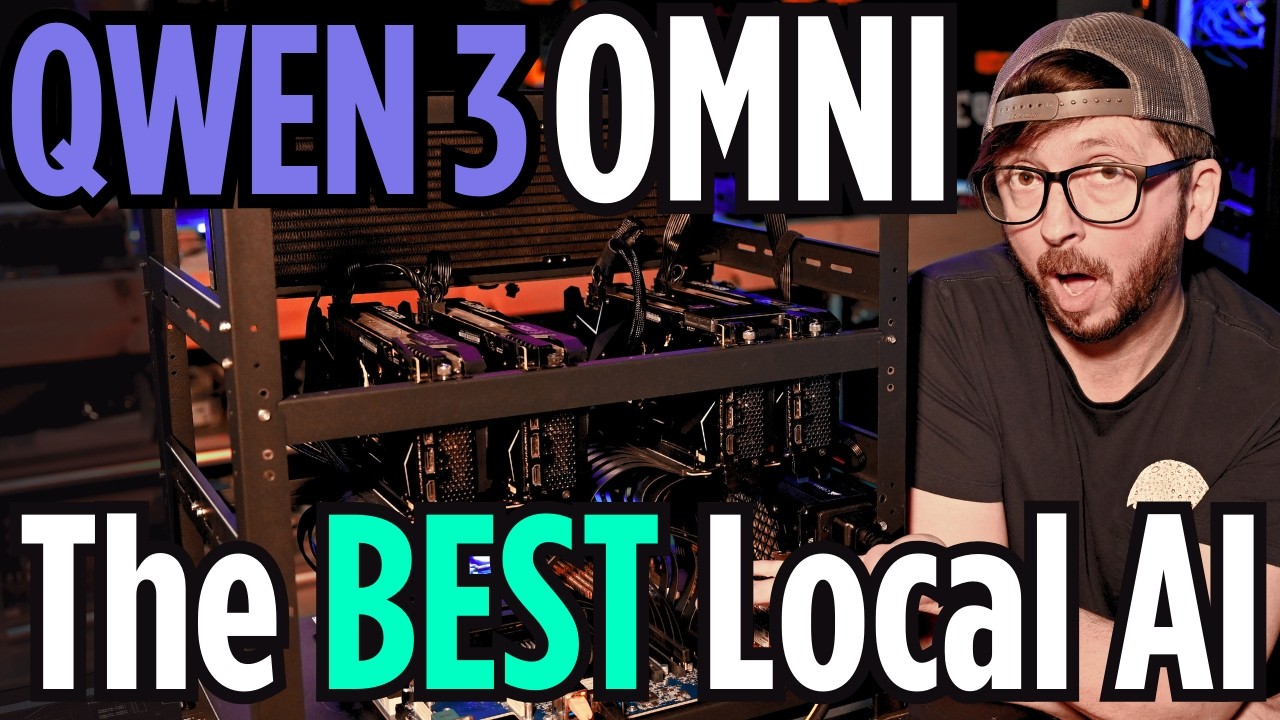The video showcases the Quinn 3 Omni, a powerful local AI model running on a multi-GPU setup, highlighting its advanced multimodal capabilities including audio generation, visual understanding, and video analysis, making it highly versatile for various interactive and real-time applications. The host also discusses the technical requirements and challenges of running the model locally, demonstrates its impressive performance on complex tasks like data center diagram interpretation, and expresses optimism about its future developments and accessibility.
The video presents an exciting first look at the Quinn 3 Omni, a powerful local AI model running on a multi-GPU setup, specifically a quad 3090 rig. The host demonstrates the model’s multimodal capabilities, highlighting its ability to process and generate audio, understand images, videos, and text inputs, and respond interactively. The AI can perform audio generation, which is a standout feature compared to other models like VLM that lack this functionality. The demonstration includes conversational exchanges, visual recognition tasks such as reading text on a hat, and identifying objects like a hard drive, showcasing the model’s impressive visual understanding despite some latency in processing.
The Quinn 3 Omni model supports a wide range of use cases, including speech recognition, speech translation, music and sound analysis, audio captioning, and various visual tasks such as optical character recognition (OCR), object grounding, target detection, and image question answering. The model also excels in video-related tasks like scene transition analysis, video navigation, and detailed video content description. These capabilities make it highly versatile for applications requiring integrated audiovisual understanding and interaction. The host emphasizes the model’s potential for real-time chat interfaces and agentic functions, such as controlling servers via IPMI commands, although caution is advised with such powerful features.
The video also delves into the technical aspects of running Quinn 3 Omni locally, noting the need for a robust hardware setup and some customization of the Gradio interface for optimal use. The host discusses challenges like managing storage efficiently, handling VRAM requirements, and dealing with occasional crashes or interface errors. The model’s instruct variant, which combines thinking and talking capabilities, demands significant VRAM but offers the most comprehensive functionality. The host praises the use of Proxmox and containerization for managing complex AI environments, making the setup more accessible for users who may not be Python experts.
A particularly impressive demonstration involves feeding the AI a complex rack layout diagram of the host’s home data center. The model accurately interprets and describes the architecture, including server models, storage systems, network connections, and power management units. This level of detailed understanding surpasses previous models the host has tested, highlighting Quinn 3 Omni’s advanced generalization and visual comprehension abilities. The host expresses enthusiasm about the model’s potential and hints at future developments, such as larger models and distributed inference capabilities.
In conclusion, the Quinn 3 Omni represents a significant advancement in local AI models, combining multimodal input processing with audio generation and strong visual understanding. The host plans to release a detailed written guide to help others set up and use the model locally, encouraging viewers to explore its capabilities. The video closes with gratitude to the channel’s supporters and a hopeful outlook on the future of local AI development, emphasizing the exciting possibilities that Quinn 3 Omni brings to the field.
